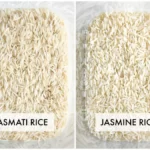Which Country Has The Best Basmati Rice Production?

In the world of culinary delights, few things can compare to the aromatic and flavorful experience of Basmati Rice Production. Renowned for its long grains, captivating fragrance, and distinct taste, Basmati rice has become a staple in many households. But when it comes to determining which country produces the best Basmati rice, the answer is not as straightforward as it may seem.
The Origin of Basmati Excellence
Basmati rice, with its roots deeply embedded in the Indian subcontinent, has been cultivated for centuries. The unique geography, climate, and soil conditions of certain regions contribute to the exceptional quality of this rice variety.
India: The Epitome of Basmati Elegance
Undoubtedly, India stands out as the Primary Producer of Basmati Rice. The fertile plains of the Himalayan foothills, particularly in states like Punjab and Haryana, provide the ideal environment for cultivating this aromatic grain. The combination of rich soil, adequate rainfall, and the expertise of local farmers results in Basmati rice that’s unparalleled in both aroma and taste.
Pakistan’s Basmati Heritage
On the other side of the border, Pakistan boasts a strong Organic Basmati Rice. The basmati-producing regions in Pakistan, including Punjab and the foothills of the Himalayas, share similarities with their Indian counterparts. Pakistani Basmati rice is celebrated for its long grains and aromatic profile, often rivaling its Indian counterpart in quality.
The Art of Basmati Cultivation
Both India and Pakistan take immense pride in the meticulous Process of Basmati Rice. From selecting the right seeds to employing traditional farming techniques, the journey from seed to harvest is a delicate art form. The attention to detail at every stage contributes to the unique characteristics that define Basmati rice.
Challenges in Basmati Production
While both India and Pakistan have mastered the art of Basmati cultivation, they face challenges such as changing climate patterns and the need for sustainable farming practices. The delicate balance required to maintain the purity and quality of Basmati rice adds a layer of complexity to the production process.
Beyond the Subcontinent: Global Basmati Presence
In recent years, other countries have also entered the Best Basmati Rice in India arena. Countries like the United States and some in the Middle East have begun cultivating Basmati varieties. However, purists argue that the unique characteristics of true Basmati are best preserved in the traditional growing regions.
Preserving Authenticity: Geographical Indication and Global Expansion
Beyond the Subcontinent, the global presence of Basmati rice has expanded in recent years. Countries outside the Indian subcontinent, such as the United States and some in the Middle East, have ventured into cultivating Basmati varieties. These efforts aim to bring the unique characteristics of Basmati rice to new regions and markets.
Striking a Balance: Sustainability and Global Demand
As the demand for Basmati rice continues to grow globally hence the Rice Exporters in India, there is an ongoing effort to promote sustainable and environmentally friendly practices in its cultivation. This includes addressing water management issues, reducing the carbon footprint of production, and ensuring fair practices throughout the supply chain.
Trade Dynamics and Geopolitical Influences
In addition to environmental challenges, the Basmati industry faces economic and geopolitical factors that influence production and trade. Trade disputes between India and Pakistan, for example, have occasionally impacted the export of Basmati rice. These geopolitical considerations add a layer of complexity to the global Basmati market, affecting supply chains and pricing.
Protecting Basmati’s Identity: Geographical Indication (GI)
As the demand for Basmati rice expands globally, the preservation of its identity becomes crucial. Both India and Pakistan have taken steps to protect Basmati as a Geographical Indication (GI). This designation emphasizes the importance of preserving the authenticity of Basmati rice by tying it to its region of origin. This recognition helps protect the reputation and market value of Basmati rice produced in these specific geographical areas.
Culinary Versatility: Basmati Beyond Borders
Basmati rice’s popularity transcends cultural boundaries, and its culinary versatility has contributed to its global appeal. Chefs worldwide appreciate its distinct characteristics, incorporating Basmati into a wide array of dishes, from traditional biryani and pilafs to fusion cuisine. The adaptability of Basmati rice has played a role in its widespread adoption beyond the Indian subcontinent.
The Future of Basmati: Innovation and Sustainability
Looking ahead, the future of Basmati rice production involves addressing contemporary challenges while embracing innovation. Sustainable farming practices, technological advancements, and research into climate-resistant varieties are crucial for ensuring the longevity of Basmati cultivation. Efforts to balance increased global demand with environmental stewardship will shape the trajectory of the Basmati industry in the coming years.

 Previous Post
Previous Post Next Post
Next Post